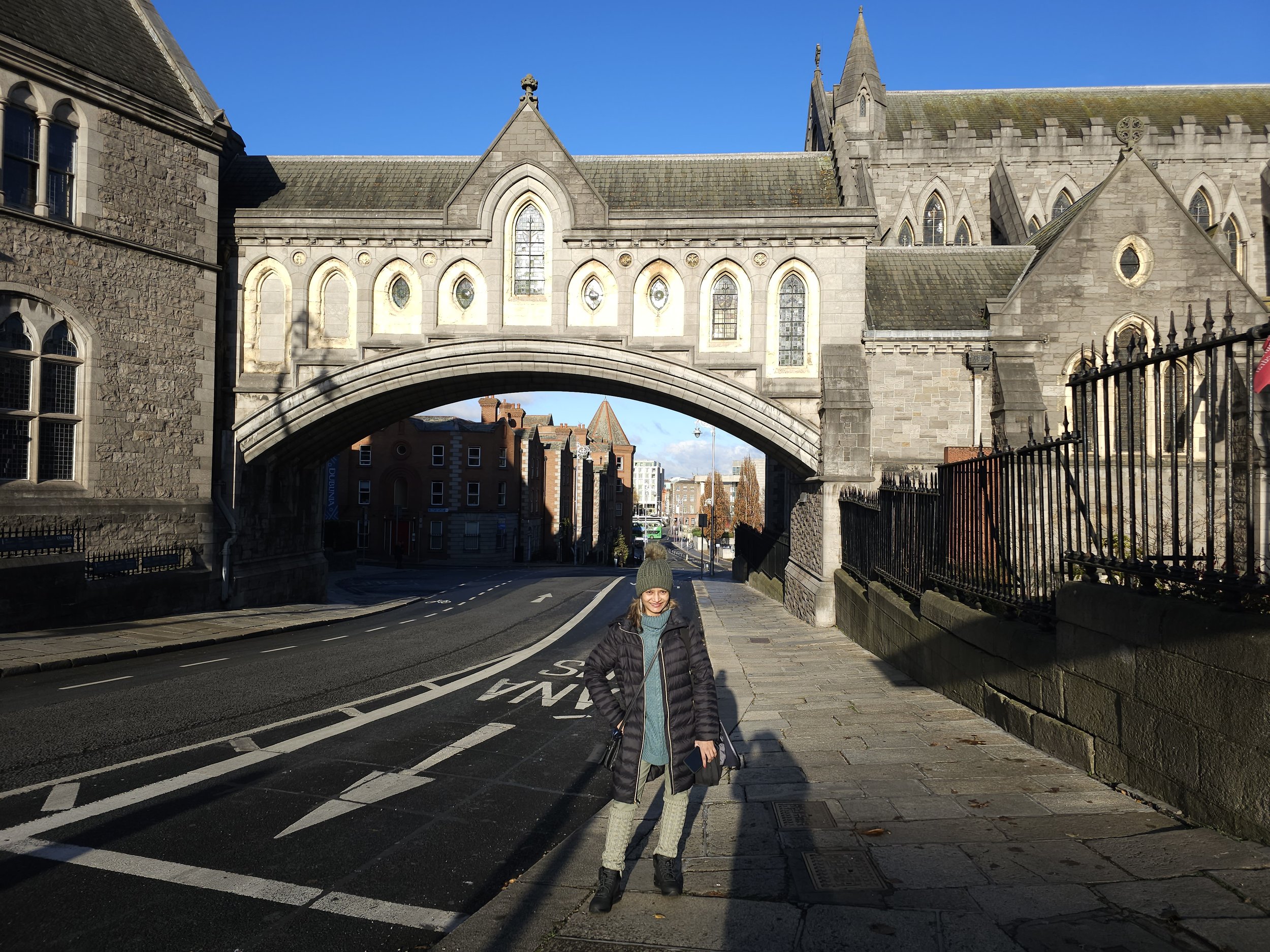Discovering Dublin - The Top Things to See & Do
Published January 9th, 2024
Photography by Pablo Dassen and Rey Haydar unless otherwise noted.
There’s a certain curiosity people have for Dublin. As the capital of the Republic of Ireland, it stands as the country's largest city, encompassing political, economic, and cultural significance. More than one in five residents of Ireland call County Dublin home. It’s the most popular starting point for tourists to Ireland, yet many visitors tend to spend little time here, content in engaging with the more picturesque countryside and the famous “lush, rolling hills.” However, missing Dublin means missing an important part of the Irish story. Dublin's unique charm lies in its seamless fusion of rich history and modern cosmopolitan vibes. Immersing yourself in all that it has to offer will leave you feeling more complete as a traveller and as a person.
Facts and Practicalities
Dublin sits across the Irish Sea, a mere 120 km off the British coast on the east coast of Ireland along Dublin Bay. The River Liffey divides Dublin, historically in more pronounced ways than now.
Currency: Euro (€)
Population: ~1.5 million in County Dublin
Electricity: 230v/50hz Type G Plug
Visitor Visas: Not required for Canadian, American, UK and EU passport holders
Image via Aer Lingus
Aer Lingus and Dublin Airport (DUB):
Ireland is one of the pioneers of transatlantic travel. Ireland's flag carrier is Aer Lingus which operates from Terminal 2 at Dublin Airport, one of the 15 busiest airports in Europe. Terminal 2 is also one of the few in the world outside North America with U.S. Border Pre-Clearance facilities. Terminal 1 is the base for low-cost giant Ryanair and most other carriers. The terminals are within walking distance of each other.
Tip: Accessing airport lounges is possible starting at €30 per person online.
Airport Transfers
The fastest and costliest (€30-40) journey to the city center, taxis await just outside the terminal at a designated stand. Aircoach and Dublin Express buses provide efficient, budget-friendly options starting from €8 one-way. The local Dublin Bus offers an economical (€2-3) ride into the heart of Dublin but stops frequently.
Moving around the city
Dublin's efficient public transportation system, managed by Transport for Ireland (TFI), encompasses over 150 Dublin Bus routes along with DART (Dublin Area Rapid Transit) trains for suburban travel and the city-core LUAS (Irish for “speed”) tram system. TFI offers Visitor Leap Cards, with unlimited travel passes available. Uber operates slightly different here. Booking through Uber in Dublin means booking a licensed taxi. Walking, if able, is the best and most recommended option within the city center, where attractions are close and vehicular traffic can often be congested.
Tip: Use the TFI Journey Planner for real time information.
Irish Food and Drink
No visit to Dublin is truly complete without experiencing robust Irish gastronomy, where lamb, seafood, and potatoes take center stage. Indulging in a quintessential Irish breakfast to start the day, complemented by an essential Guinness stout, encapsulates the city's rich and flavorful identity. For lunch, try Fish and Chips, locally known as “One and One.” Delve into classic delights like boxty, a traditional Irish potato pancake, and savor the delectable combination that is colcannon. From there, indulge in soul-warming, hearty Irish stews with the comforting aroma of fresh soda bread. Regardless of the time of day, a taste of world-famous Irish whiskey from exemplary distilleries such as Jameson, Teeling, or Bushmills will get the Craic (Irish for “merriment”) started.
Tip: The Jameson Distillery Tour is one of the best attractions in Dublin.
Major Attractions / Things to Do
Trinity College / Book of Kells
The only constituent college of the University of Dublin is a maze of elegant architecture and home to the Book of Kells, an illuminated 8th century manuscript, and the magnificent Long Room, which is the main chamber in the Old Library.
Grafton Street / St Stephen's Green:
For year-round shopping delights, explore the pedestrianized Grafton Street. Adjacent is the serene St. Stephen's Green, a 22-acre haven with manicured lawns, a picturesque lake, and vibrant flower beds—an ideal spot for a leisurely stroll or a relaxing picnic.
Merrion Square and Oscar Wilde
Merrion Square, a canvas of Georgian architecture, brings Oscar Wilde's spirit to life through a statue on its Northwest corner. No. 1 Merrion Square, Wilde's former residence, now houses a museum dedicated to his life and works. The square is surrounded by elegant townhouses and is in proximity to the National Gallery of Ireland and Irish government buildings including the Oireachtas Éireann, the bicameral parliament of the Republic.
Temple Bar Neighborhood
The Temple Bar neighborhood is synonymous with Dublin's vibrant nightlife and cultural scene. This area is a haven for the arts, with a tapestry of galleries, theaters, and street performances. Renowned for its lively drinking establishments, Temple Bar is also home to trendy boutiques, art studios, and diverse culinary delights.
Tip: Temple Bar is both the name of the neighbourhood and The Temple Bar, an iconic, often packed pub.
Pub Crawl:
No trip to Dublin is complete without a pub crawl. After all, Dublin's pulsating heartbeat reverberates within its ubiquitous pubs. These lively establishments are not just places to drink but hubs to truly connect with the locals and their culture. Some of the more famous pubs include The Temple Bar, O'Donoghue's, and The Brazen Head, Ireland's oldest pub. Enjoy live music and savor a pint!
Summary
Dublin will surprise you and satisfy your curiosity. Its depth and its character are truly reflective of the warm, welcoming people that call it home. It has witnessed a lot and has had to be resilient, tough, and strong. Perhaps because of that, it also has an unmistakable sense of joy that sits right below the surface and peeks through the crack every chance it gets. Forged by centuries of emigrants and immigration, its a city that understands the world far more than they’re given credit for.
Connect with Pablo Dassen here.











